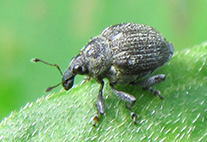Abstract
This taxonomic study includes: (i) a redescription of Leucochrysa (Leucochrysa) nigrilabris (Banks) (♂ and ♀), based on the type specimen and new material and (ii) images of the Leucochrysa (L.) insularis (Walker) type, adult color polymorphism, and genital characters (♂ and ♀). For both species, it provides: (iii) descriptions of the larvae, (iv) biological notes, and (v) geographic records. Using the above information, we compare the two species with each other and with other Leucochrysa (Leucochrysa) species that purportedly are closely related. We conclude: First, the larval features of L. (L.) nigrilabris and L. (L.) insularis coincide with those previously described as characteristic of the genus Leucochrysa and its subgenus Leucochrysa. Second, based on their genitalia (♂ and ♀), larval morphology, and biology (e.g., deposition of eggs in clusters), the two species are distinct, but very closely related. And, third, L. (L.) nigrilabris and L. (L.) insularis share several characteristics with the Leucochrysa (L.) “varia-like” species; these include similar adult color polymorphisms and aspects of their larval morphology. However, their genitalia (♂ and ♀) differ significantly from those of the described L. (L.) “varia-like” species, and thus we consider the two sets of species to be distinct.

